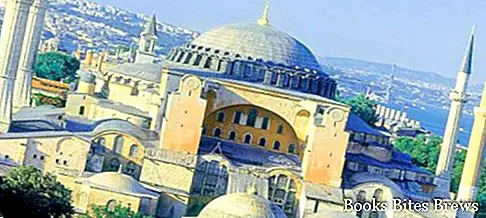What to see in Istanbul, itinerary including the main monuments and places of interest of ancient Constantinople, including Hagia Sophia and Blue Mosque.
Tourist information
The Hagia Sophia is the main monument in Istanbul, where the patriarchs once resided, before becoming a mosque and then a museum, after its deconsecration wanted by the first Turkish president and founder of the Republic of Turkey, Mustafa Kemal Atatürk, in 1935.
The construction works ended in 537 and it is a very large church with a huge Byzantine-style dome second only to the cathedral of Seville for grandeur.
The Zeyrek Mosque is a mosque in Istanbul, the first Church of Christ Pantocrator, consisting of two churches and a chapel, which represents an excellent example of Byzantine architecture in Constantinople located in the homonymous district that takes its name from it.
The basilica of San Polieucto is also a Byzantine church dating back to the 6th century and, discovered in the 1960s, was incorporated into a building located near the Valente aqueduct.
Although the plan of the church is square, the internal design suggests a reference to the classic rectangular basilicas with three naves, suggesting that they originally had a domed roof.
Among the findings, there was an inscription with a specific date between 520 and 524, which allowed to identify its founder, the patrician Anicia Giuliana, who was a prominent member of the Roman imperial houses of the West and the East.
Numerous tiles, of artisan origin made by the shops that operated in the city, and two finely worked pillars in oriental style are part of the decoration of the church.
What see
In the Fethiye Camii mosque, now a museum, which in the past was the church of the Theotokos Pammakaristos (Blessed Mother of God), various Byzantine mosaics are preserved.
Little Hagia Sophia, which was formerly the church of Saints Sergius and Bacchus, was transformed into a mosque during the Ottoman Empire.
Another beautiful example of Byzantine architecture is the church of San Salvatore in Chora, which has also become a mosque and subsequently a museum, with the interior decorated with Byzantine frescoes and mosaics.
Recommended readings- Ankara (Turkey): what to see in the capital
- Bodrum (Turkey): what to see in the coastal city
- Turkey: useful information
- Ararat: ascent to the mountain where Noah's Ark landed
- Istanbul (Turkey): what to see in ancient Constantinople
The Sultanahmet Camii, better known as the Blue Mosque, is one of the main mosques in Istanbul while the Italian synagogue was created in 1800 and later rebuilt in 1931.
Topkapi is the name of a door belonging to the palace of the sultan (called Serraglio) of Constantinople, which was enlarged between 1455 and 1458 with the union of the ancient Byzantine imperial palace.
This palace, inserted between what to see in Istanbul, which was formerly surrounded by a wall with access through various doors guarded by special armed guards, is now used as a museum containing splendid works of art that are part of the sultan's treasure.




